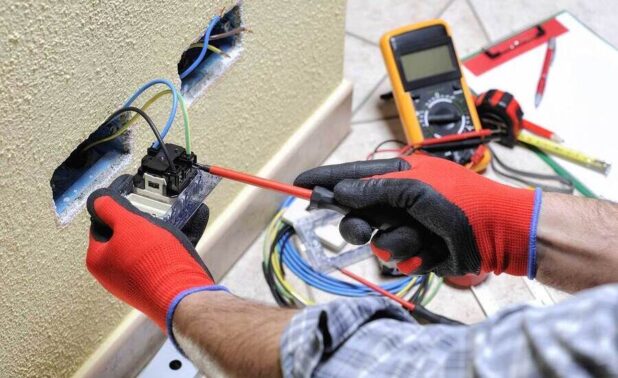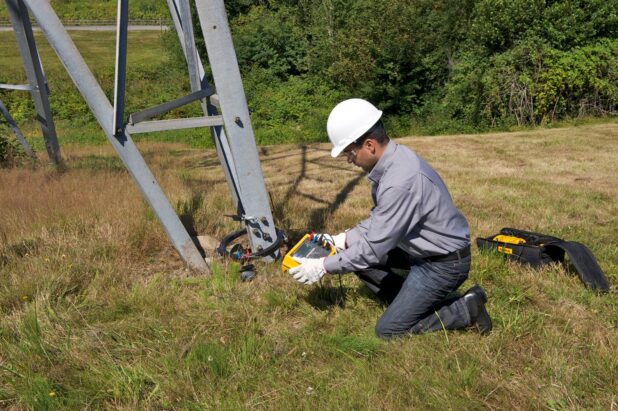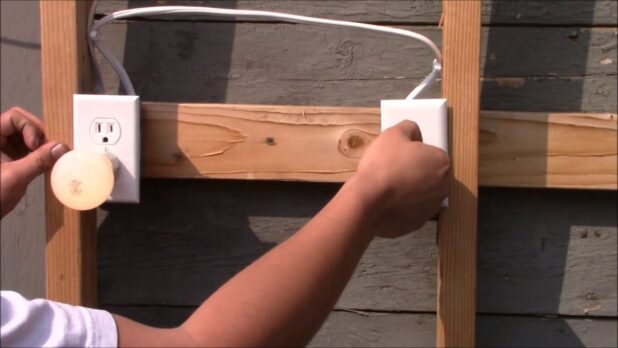It happens every now and then that something related to electricity in your home goes to waste, and the first thing most tend to do is try to fix it themselves. However, you should always ask yourself if it is a good idea or not? The works around electrical devices, electrical installations, and electricity, in general, is something that should definitely be left to the master of his craft – an electrician. The job of an electrician is generally not easy and, in addition to everything, it is the only craft at home that is life-threatening if you have zero experience and try to fix it yourself.
Hundreds of people around the world get seriously injured every year because they start repairing electrical devices or installations without adequate equipment and knowledge. You definitely don’t need to risk your life and rush into something you don’t know how to do. If you have any doubts about the electrical installations in your home, the best solution is to call an electrician who will solve it for you. Don’t worry if you don’t know one, RG Electric can help you locate the nearest one in your area.
For all the reasons stated above, this article is going to give you 9 problems related to electricity you should never handle yourself and should always leave to professionals.
Table of Contents
1. Old electrical installations in the house

There are things that can last throughout your life. Unfortunately or fortunately, this is not the case with electrical installations, which are installed in your home. The lifespan of conductors that conducts steel is no more than 25 years! Conductors that have been installed in the walls of your home for more than 25 years can be unreliable, and those that exceed this number of years can be dangerous. With time and constant usage, they wear out, the plastic sheath which insulates the wires in which the electricity flows become porous over time and is physically separated from the conductor – copper.
2. Damage to the supply cable and cases when you do not have one of the three phases
When there is some damage to the cables, you constantly can hear the buzzing in the electrical installations. This is a clear indication that something is wrong with the electrical system in your home. Check it ASAP.
3. Old fuses
Old fuses can be a big problem when they pop out during a load and you don’t have adequate tools to test and see if they conduct electricity. An old fuse board is not practical, it’s time to switch to new, safer circuit breakers. Once the circuit breakers are installed, they have the ability to return to operation several times without the arrival of an electrician by simply moving the flag upwards.
4. Grounding issues

Grounding is a routine operation that is performed when a house is being built, but an electrician can additionally solve the problem by installing adequate probes in the ground. Grounding means connecting all yellow-green wires in the piercings at one point and connecting it to the ground. This is a practice, in order to prevent the formation of dangerous voltage in case of failure of electrical installations. This is something that can happen at any home, and by no means can be fixed by you.
5. Funny smells
If you smell an unusual smell of molten plastic – check immediately if any shock socket or plug has overheated. This most often happens with large electricity consumers such as stoves, air conditioners, heaters…
6. Flickering lights
This is perhaps the most obvious sign that the electrical system is not reliable. As already mentioned, a reliable system implies a constant flow. In addition to the uneven voltage affecting the flicker of light, it also affects other devices in your home. When devices are exposed to such rapid voltage changes, the device fails rapidly. Such voltage changes adversely affect the safety of the entire home, as well as your budget, if a device that consumes electricity breaks down, you should buy a new one.
7. Warm outlets and switches

If you notice switches around your home feel warm when you touch them, you should go around the house to make sure if there are any blackenings on the walls. What is usually behind this problem is that the circuit is overloaded with demand, but the reason could also be something much more serious. In any case, it’s a sign that you should call an electrician to have it checked out.
8. Rust under the main service panel
There are two serious warning signs under your main service panel which you should be worried to see. They are rust and moisture. Such issues represent a serious threat to the main wiring connections and often indicate serious electrical issues.
9. Electrical bills are simply too high
When you notice your electrical bills rising to the point where you simply couldn’t have spent that much electricity, it’s a sign something is wrong. Call an electrician to give the installation a detailed check-up and see where the problem could be.
One final piece of advice…

The most common causes of damage to the home environment are power failures that can result in fire or electric shock. Often the causes are old and faulty household appliances in which due to aging or damage, the insulation resistance can break, causing an electric shock. Therefore, to prevent such problems, be sure to maintain electrical installations in your home, and in case you notice that something is wrong, call an electrician immediately to prevent further problems.
Because electrical systems are so dangerous (and we are surrounded by them in both our homes and workplaces), it is very important to hire qualified electricians to ensure the electrical safety of your home or workplace. Only a qualified electrician can safely provide electrical testing and perform a range of other electrical services necessary to guarantee safety and security.
 World Magazine 2024
World Magazine 2024






